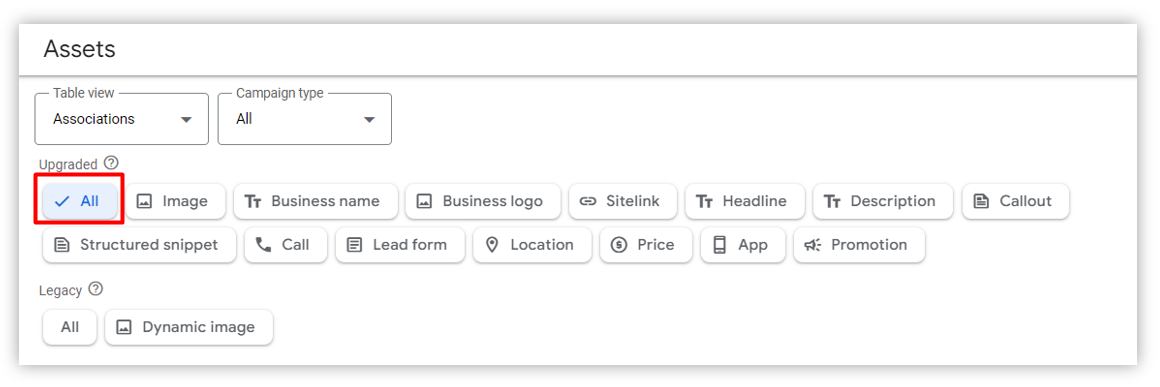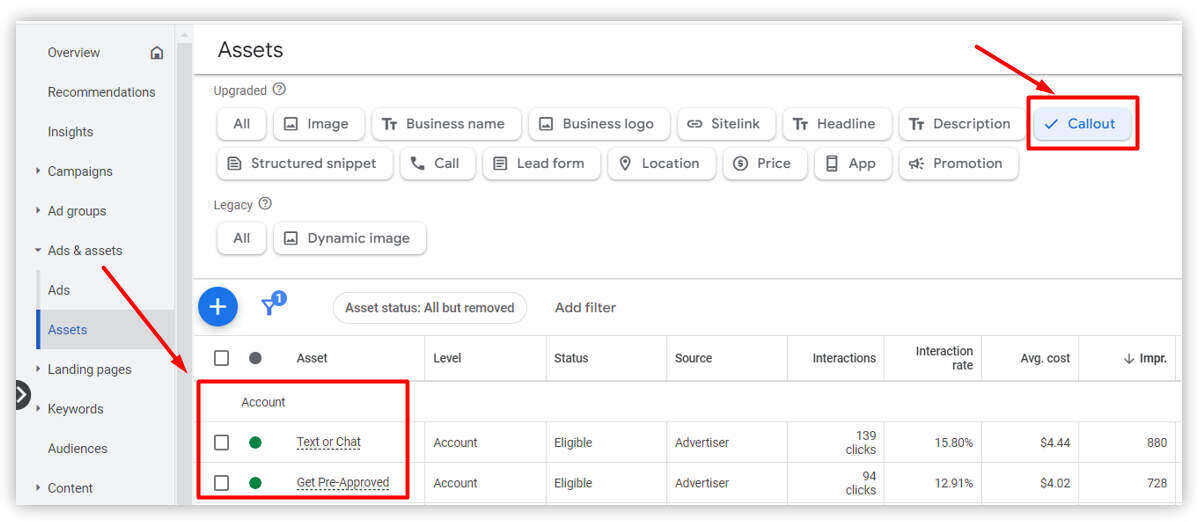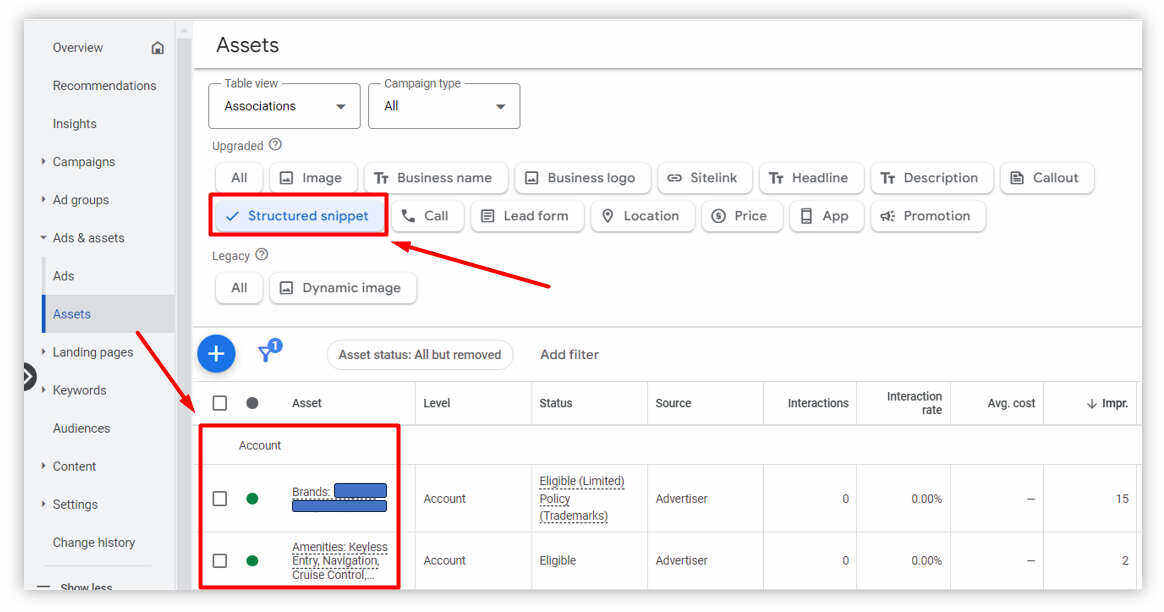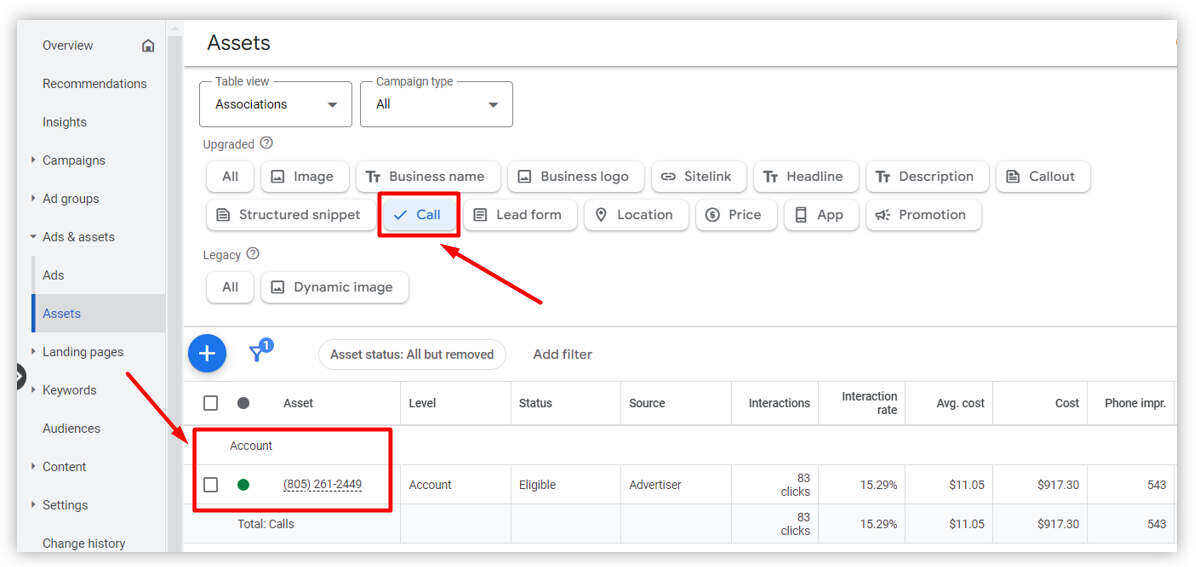Google Ads sitelinks are ad extensions that let advertisers promote up to four more specific links within one PPC ad and can increase the click-through rate. These links should be relevant to users' search intent, like blog posts, product pages, home pages, or other PPC landing pages. These links help you promote your products or services and sections of your website to your customers. These types of Google ad extensions show extra information on your ads. Site link extensions help highlight specific product categories, answer common questions, etc. As long as there are more site links, there are more chances of increased CTRs.
Sitelinks give your ad more visibility and space on the search engine result page and are also used to promote low-search volume topics. In PPC marketing, sitelink assets extension plays a vital role in business expansion by displaying your product or services on the SERP. In this blog, we will deal with different types of site links, the benefits of site links and much more.
Different types of sitelinks extension

1. Paid sitelinks: These are the types of sitelinks in which the text and URLs can be controlled by site owners that are displayed with your ads. They are created, added to relevant campaigns and ad groups, and shown under the text.
2. Organic one-line sitelinks: One-line sitelinks can appear on many queries. These links are for branded terms and contain up to six site links to other pages on your website. They only appear on the top search results. They typically contain up to four site links, but a variation displays more site links in a carousel. These sitelinks can go to other pages on a site or jump directly to content within pages using fragment (#) links.
3. Search campaign sitelinks: These can appear in ads at the top and bottom of Google search results. They appear as traditional sitelinks with a list of links. You can control how many sitelinks you want to show in your Google Ads campaigns. For site links in search campaigns, at least two links will appear on the desktop. But you can also show up to six sitelinks. On mobile, at least one site link will appear. And you can show up to eight.
4. Video campaign sitelinks: These sitelinks extensions appear for ads that play before, during, or after YouTube videos. These additional links take your customers directly to specific pages on your website. There, they can learn more about your products or services or make a purchase. At least two sitelinks appear underneath ads on YouTube when played on mobile devices.
There are other types of sitelinks as well, and they are:
1. Callout extension: Callout assets highlight short messages of up to 25 characters. They are great for emphasizing promotions, offers, slogans, or key brand differentiators. You can use them to highlight your unique selling points and essential information that customers should know about your business.

2. Structured Snippet extension: Structured snippets highlight specific products, services, brands, or features you offer. You select a predefined drop-down e.g. brand, course, coverage to showcase unique attributes. They are great for displaying accurately what your business can offer potential customers.

3. Call extension: Call assets to help add a phone number to your ad. This becomes a clickable call button on mobile devices that users can tap to call your business directly. If you are trying to drive more phone calls for your business, then you need to add these to your campaign. You can also incorporate call tracking to track conversions from phone calls back to your Google Ads campaigns.

4. Location extension: Location assets display your business’ physical addresses and a map marker to your ad. For mobile ads, this also includes clickable directions. If you have a physical location where customers can visit or shop, then you should add that location using your google business profile.

5. Price extension: Price assets highlight the cost of your products or services. Searchers can browse prices directly in your ad carousel. For example, service businesses with specific prices can show how much each service costs. You can also show the base price for each service that you offer.
6. App extension: App assets add a link to download your mobile app on app stores. This extension is only shown to mobile users and can be a great way to encourage potential customers to download your app.
7. Lead Form extension: Lead form assets allow searchers to submit their contact information directly from your ad without visiting your site. This asset type is excellent for capturing leads. If you want to drive more leads for your business, add lead form assets so prospects can quickly become leads. When you click on the lead form asset, it will open, and you can fill out your information. When you enter your name, email, phone number, and any other information the advertiser requires, they will count you as a new lead.
8. Image extensions: Image extensions are new, having only recently been launched, but they’re an excellent asset when you’re looking to promote physical products and goods. They allow you to share images alongside your ad, which can go a long way in helping it stand out amongst other results.
9. Promotion extensions: Everyone likes sales, discounts, and the opportunity to save money. Most Google Ads don’t heavily promote sales; this extension, thus can make your digital marketing company successful. The promotion extension lets you add sale information to your ad campaign, including a reason for the sale, the discount or special offer, and when the request is valid.
Benefits of sitelinks extensions
1. Updates immediately: Through Google extension, you can change link texts and URLs whenever you want, keeping them up-to-date for sales and special offers. You don't need to make or edit new ads to include sitelinks.
2. A thorough analysis of your clicks: Find out how many clicks occurred on your ad when sitelink extension appeared. Break down the statistics by the campaign, ad group, or ad. Divide your statistics to view the number of clicks on the individual sitelink extension versus another part of the ad, for example, the headline, other site links, or another asset.
3. Use conversion tracking for landing pages: Set up conversion tracking for the pages people visit when they click the sitelinks extension below the ad. It would help if you optimize your landing pages for light conversion events such as a website visit or an add-to-cart.
4. Edit your sitelinks without losing data: Edit your sitelinks without resetting their performance statistics.
5. Schedule with start and end dates: Specify the dates, days of week, or times of day your sitelinks are eligible to show the required information.
6. Increased click-through rates: By adding more related information, assets can attract more searchers to click on your ads.
7. Low cost per click: Google Ads extension or ad assets can improve your quality score, which lowers your CPC.
8. Improved ad rank: Higher CTRs and quality scores boost your ad rank, helping you gain more impressions and clicks.
9. More context: Google Ads assets give searchers more information about your business before they click your ad.
10. Large ad size: Assets increase the space your ad takes up on the search results page.
Best practices of Sitelink extensions
.jpg)
1. Focus on relevancy: Your sitelinks must be relevant to the searcher’s query or keywords. For example, as a printer retailer, you might show your ad to someone searching for a portable printer. In this case, a relevant site link would be a product page for a portable printer or a guide to buying a portable printer. An irrelevant site link would be a link to your 3D printer machine or your entire product catalogue. These pages aren’t what the searcher would look for with this query. The linked pages should be relevant to the main ad and provide additional information or value to the user. The more relevant your assets are to each search query and your landing pages, the better they will perform. For example, if someone is searching for a luxury SUV, incorporate assets relevant to luxury SUVs. It provides a better user experience for potential customers. For example, I searched for landscaping near me, and the site link assets below give more information about what the company does, they also include a link to their landscaping design services.
2. Specify the objectives: Before you start, think about your goals. Will you achieve your business target by setting your specific objectives as decided by you? Will the asset extension work well with both branded and non-branded keywords Your objectives will help determine if your sitelinks are adaptable and beneficial to the searcher. Also, use specific keywords and phrases in your headlines to help users understand what they can expect from the linked page. This should also be one of the specified objectives.
3. Frame significant strategy: Do not keep your sitelinks separate. You should frame a strategy considering the accompanying ad, landing page, and other assets. Make sure they all work together in service to your strategy. So if Google Ads extension is the part of marketing strategy, it can definitely boost performance in running PPC ads.
4. Add descriptions: The site link descriptions should provide more information about the linked page and help users make informed decisions. A report is a brief text under each sitelink extension. Adding captions to sitelinks extension doesn’t reduce the number of links you can show, so always add them for each sitelink for your ads and ensure they’re helpful to the people viewing your ads.
5. Serve various purposes: Various sitelinks serve various purposes. For example, you don’t want to use every sitelink on an ad to promote on-sale products. One could encourage on-sale development, generate leads, highlight a new product category, and direct prospective clients to helpful information. For multiple purposes as mentioned above various sitelinks or extensions can be added. Also, ensure that the linked pages are relevant to the main ad and provide additional information to the user.
6. Track link performance: It’s not enough to set up sitelinks. It would be of much help if you also tracked them to see which links are getting monitored and which are not. So it's important that sitelinks should perform well, given their type and objectives.
7. Focus on search intent: The intent behind the search or keyword will also affect the relevancy of your sitelinks.Google is an expert at understanding the meaning and purpose behind every search. It can understand the difference between someone searching to buy a printer and researching which printer would be best for them. Consider what keywords your sitelinks and ads are appearing for. And understand their search intent. It is majorly classified into four categories and that are:
a. Navigational intent: The searcher is looking for a specific website or webpage, such as the Dell website or Facebook login.
b. Informational intent: The searcher is looking for information, for example, how much does a printer cost,what is the warranty period of the printer and so on.
c. Commercial intent: The searcher is looking to research before making a purchase decision for, e.g. the best portable printer.
d. Transactional intent: The searcher wants to purchase, e.g. a portable printer online after the prices have been displayed.
8. Buy a funnel: One part of determining search intent is understanding whether the searcher is ready to buy using a transactional keyword or is just researching using an informational keyword. For example, someone searching “buy portable printer” would not expect to see informational pages. They would be more interested in category and product pages. Keep this in mind when choosing which pages to include in your sitelinks.
9. Update the sitelinks: Google frequently changes its sitelinks algorithm to serve the needs of its users. The appearance of sitelinks is automated now, but you can optimize your content in a way that follows Google’s best practices and influences sitelink placement. So for this regularly reviewing and updating your sitelinks is a must to ensure that they remain relevant and helpful to users.
10. Mobile-friendly sitelinks: As more and more users have accessibility to phones it becomes necessary that sitelinks extension should be optimized for mobiles. However there are some ways through which ads can be optimized for mobiles and they are:
a. Use the right ad assets for mobile
b. grab attention with attractive headlines
c. Make sure your mobile landing page matches your ad.
Conclusion
Google Ads assets provide a way to improve your text ads with additional, relevant information that can help you gain more clicks and conversions. The various asset types allow you to highlight important website pages, offers, product details, locations, pricing, and more. Be systematic with adding assets. Only include those that will provide value to searchers for each keyword and ad. With valuable assets, you can boost ad performance and take your Google Ads results to the next level.
Google Ad extensions are an exceptional way to stand out in the search results and gain more visibility, clicks, and, ideally, conversions for your ad. Ad extensions can quickly increase CTR rates with a proper PPC campaign analysis. You can also outsource PPC services to maximize the advertising ROI by using the sitelink extensions. The PPC experts excel in fine-tuning advertisements for optimal performance, leveraging their expertise to maximize returns on investment. Their proficiency extends to providing tailored strategies and insights to enhance ad effectiveness and drive desired outcomes. By hiring our PPC experts you can get advantage of various other services for your business like lawyer PPC, electrician PPC, appliance repair PPC, roofing PPC, flooring PPC and more other services. By availing all these services from our digital marketing agency you can expand online visibility for your business and increase its profitability in the long run.
References:
- Sitelink Assets (Extensions) best practices & examples
- Create and edit sitelink assets
